Madarsas the Hindu connection | ||||||
| Hindu students are increasingly embracing Islamic seminaries in many villages in Bihar. The state is unique — it has recognised madarsa education for government jobs, says Debaashis Bhattacharya | ||||||
The invigilator can't believe his ears. How can a Hindu student take an Urdu exam? There has to be a mistake, he thinks, and refuses to hand him a question paper in a Bihar college examination. The student, Sanjay Kumar Choudhury, explains that Urdu is his first language since he has studied in a madarsa. To prove his point, he recites verses from the Koran that he has learnt in school. The official is still not convinced. "He looked incredulous when I told him my father is a pious Hindu," recalls Choudhury. That was in 1994 — when Hindu students were still a rarity in Bihar madarsas. Not any more. With the Nitish Kumar government recognising madarsa degrees and certificates for government jobs and college and university admissions in 2006, Hindu students are increasingly embracing the Islamic seminaries in many Bihar villages, where madarsas are often the only option that students have in the absence of government schools. Remarkably, this is happening in a state ruled by Nitish Kumar's Janata Dal (United) with its coalition partner, the Bharatiya Janata Party, which has long decried madarsa education in the country as sectarian. The results of the Bihar State Madrasa Education Board (BSMEB) — which oversees 1,129 state-funded and 3,000 non-aided madarsas in Bihar — examinations speak for themselves: 177 Hindu students cleared the wastania (Class VIII) examination, while another 110 Hindu students passed the fauquania (Class X) and moulvi (Class XII) examinations in 38 districts in the state this year. Indeed, the number of Hindu students graduating from madarsas is on the rise in Bihar. "It has doubled if you compare the 2008 madarsa board results to those of 2009," BSMEB chairman Moulana Mohammad Aejaz Ahmad says. Of course, Hindus are studying in madarsas in a few other states as well. In West Bengal, for instance, nearly 15 per cent of madarsa students are non-Muslims, state minority development department officials say. Several madarsas also have a number of Hindu teachers and clerks on the staff. At least in two madarsas in Burdwan district, Hindu students outnumber their Muslim counterparts.
What makes Bihar unique, however, is that unlike states such as Bengal, it has recognised madarsa education for government jobs, recruiting many madarsa students as teachers. It is one of the main reasons why madarsas are drawing Hindu students from rural Bihar. There are many other reasons as well. To start with, Bihar madarsas — contrary to popular belief — no longer offer what can strictly be described as a religious education. Students are required to study subjects ranging from mathematics and physics to English to biology, besides Islamic religious scriptures. "If you leave aside the Koran and the Persian and Arabic languages that we teach in madarsas, there is little to distinguish us from government schools. We follow almost the same syllabus and same books, only translated into Urdu," Ahmad says. To top it, the madarsa board has dropped the Islamic dress code for students. "You have to change with the times. Nowadays students wear shirts and trousers to schools without fez or skull caps," says BSMEB assistant secretary Sadique Hussain. Madrasa Zeyaul Uloom in Haidargunj Karah village in Nalanda district is a case in point. Ahsan Zeya, the sadar mudarris or the principal, a wiry middle aged man, is wearing a traditional kurta and pyjama, with a skull cap covering his receding hairline. But his students, irrespective of their religion, are attired in modern day clothes. "We have no restrictions imposed on clothes or anything else. We study in a free and open atmosphere," says Vidyanandan Kumar, a 14-year-old Hindu. Kumar, in a blue shirt and grey trousers, says he knows the Koran by heart but doesn't offer namaaz in school. "Offering namaaz is not mandatory for Hindu students," says Gheyasuddin, a retired Indian Air Force official, who is now secretary of the madarsa. Like his other Hindu classmates, Vidyanandan says he enrolled in the madarsa since it was the only school in his village. He is the topper in his class and wants to be an engineer. "Mathematics and physics are my favourite subjects," he says. Bihar clearly wants to bring madarsas into the mainstream by recognising its education and by gently nudging it towards modernity. It is part of what the Bihar chief minister calls "social engineering" — his way of tearing down the barriers between different castes and religious groups to provide inclusive growth in a state that has been known for all the wrong reasons. In Bihar, where the Muslim population is said to be nudging 25 per cent, as Ahmad says, and where Urdu is the second official language after Hindi, an all-embracing, forward-looking madarsa is the need of the hour. Madarsas have often been accused of fostering Islamic militancy, much to the dismay of many teachers and students. "We consciously teach our students about the perils of terrorism. We are possibly the only education institution to do so," BSMEB chairman Ahmad says. For some Hindus, madarsa education simply provides a meal ticket. "I have just been selected as an Urdu teacher in a secondary school in Buxer district," says 34-year-old Suchit Kumar, a former student of Madrasa Zeyaul Uloom. Bihar is in the midst of appointing some 300,000 teachers in primary and secondary schools, nearly 50,000 of them to teach Urdu. Candidates from madarsas, a Bihar education department official stresses, are "preferred" as Urdu teachers in government schools. Hindu students say madarsas do not discriminate among students on religious lines. "There is no religious division here," says Suchit Kumar — moulvi sahib to both Hindus and Muslims of his village. Kumar, who did his postgraduation from Madrasa Azizia in Bihar Sharief, Nalanda, points out that he studied all his life in madarsas. "But no one has ever asked me to convert. I remain a Hindu," says Suchit Kumar, whose three brothers have studied in their village madarsa. Clearly, the local community takes pride in the education that madarsas provide their children with. This is evident in Haidargunj Karah, a Muslim-dominated village some 102km from the state capital of Patna. Most of its 10,000-odd people are poor bidi workers who make Rs 49 a day rolling 1,000 bidis. The villagers, who contribute Re 1 to their Madrasa Zeyaul Uloom for every 1,000 bidis they make, virtually run the school. The school is partly funded by the Bihar government, which pays the salaries of six of its 21 teachers. The other teachers are paid between Rs 1,000 and Rs 1,800 by the community every month. The two-storeyed brick building has for its 1,470 students 15 classrooms, though several have gaping holes for doors and windows. Among the contributors is 65-year-old bidi-maker Tikkam Choudhury. He says he sent his son Subodh to the village madarsa as it was "free and provided quality education". He also got two free meals there, says Choudhury. Subodh is now an intermediate student in an English-medium school in the district headquarters. "He has been a good student and is now on scholarship," the proud father says. If there is one thing all parents from Haidargunj Karah agree on, it is this: the committed madarsa teachers have made their children disciplined. "The religious mooring of a madarsa is actually a good thing. My son knows what is good and bad for him and for the society he belongs to," an ailing Ramdhani Choudhury says of his son Shyamsunder. A former madarsa student, Shyamsunder Choudhury, 36, is now an employee of the Archeological Survey of India's museum at the nearby ruins of Nalanda University. Few Hindus have complaints about madarsas in Bihar. As Shyamsunder Choudhury sees it, madarsa education in the state is as good as any. But it goes without saying that the number of Hindu students is still small compared with Muslim students in the madarsas. As against the 23,850 successful Muslim candidates in the Class XII examination in 2009, 77 were Hindu. "But that's missing the wood for the trees," BSMEB chairman Ahmad says. What matters most, he says, is that both Hindus and Muslims are now making the best of the madarsa education in Bihar. Sanjay Kumar Choudhury — who is looking for a job and is confident that he'll get one — could not agree more. |
--
Palash Biswas
Pl Read:
http://nandigramunited-banga.blogspot.com/


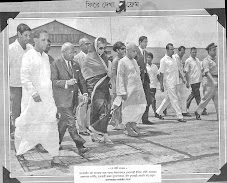



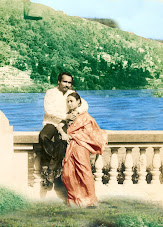






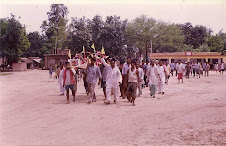

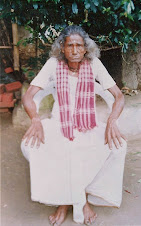
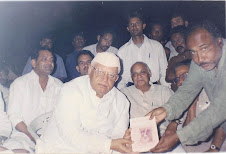
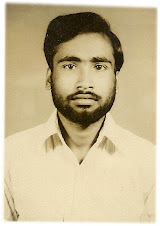



No comments:
Post a Comment